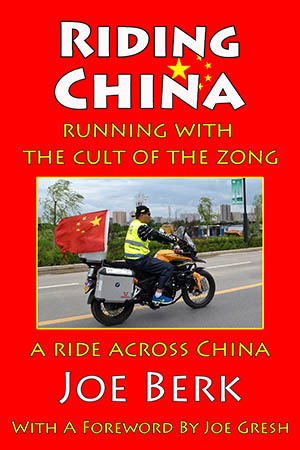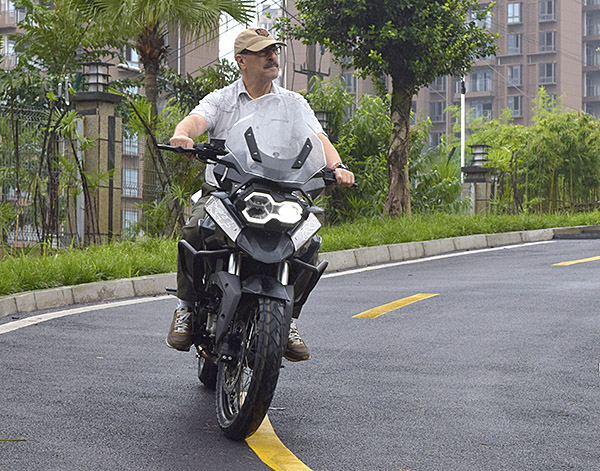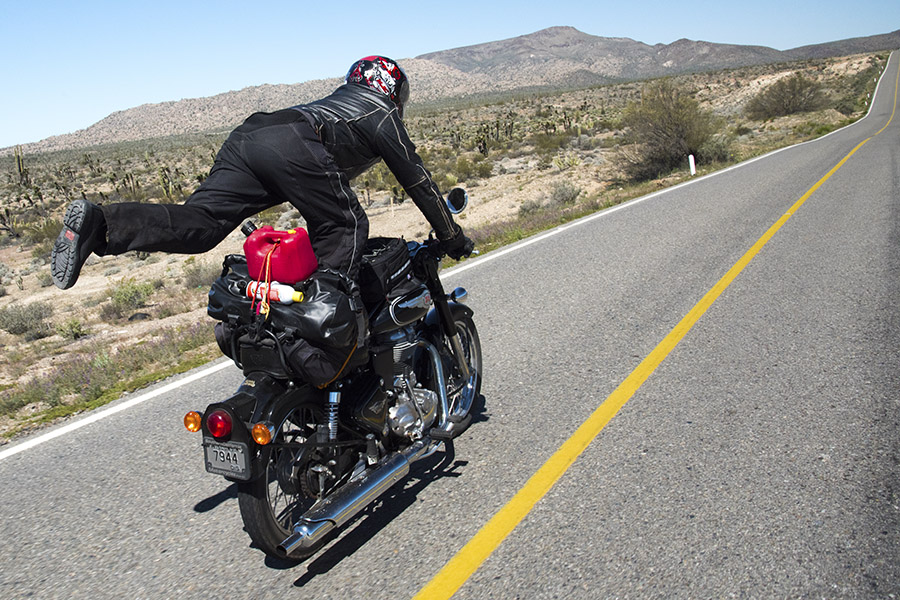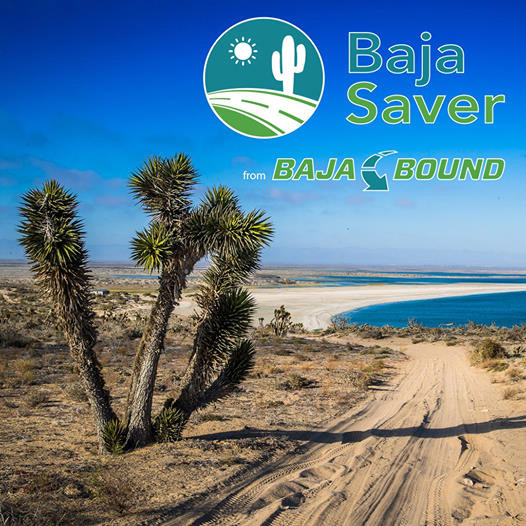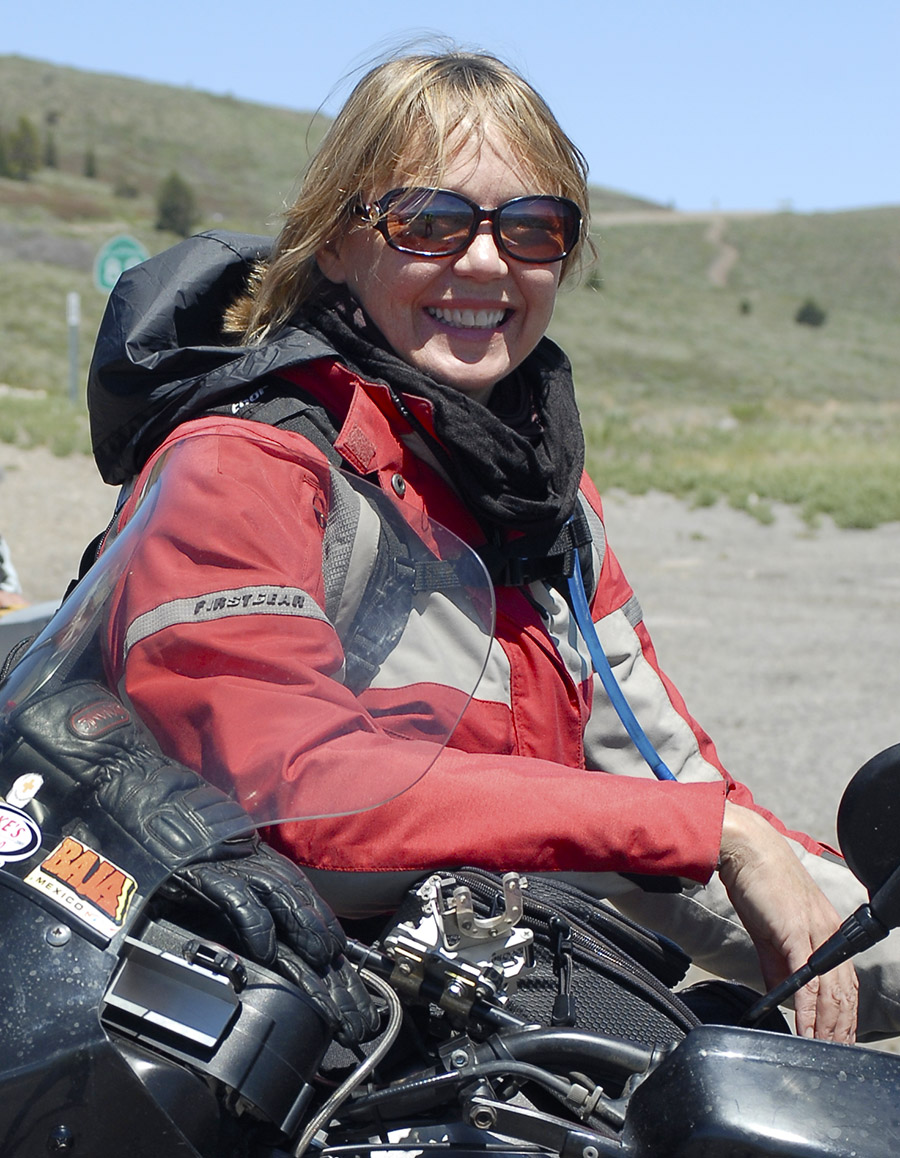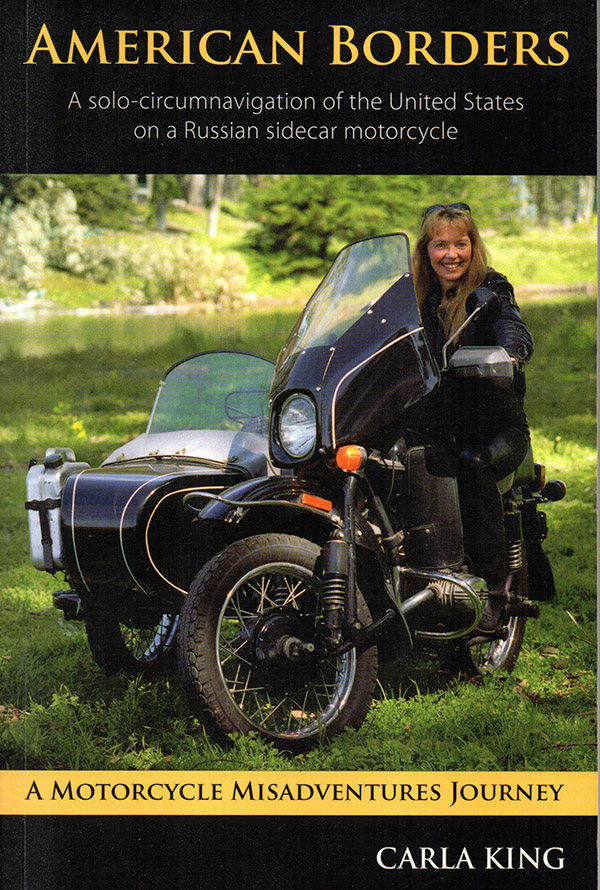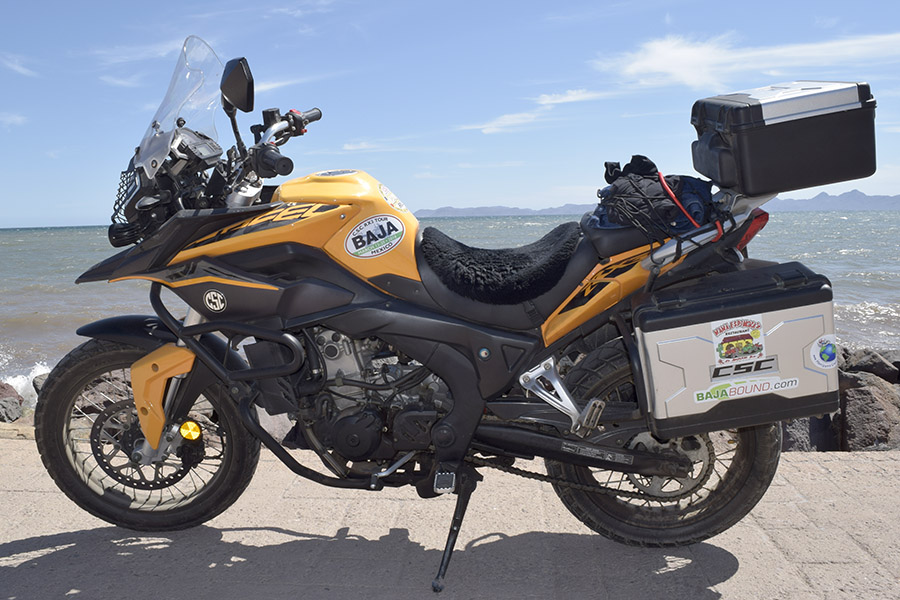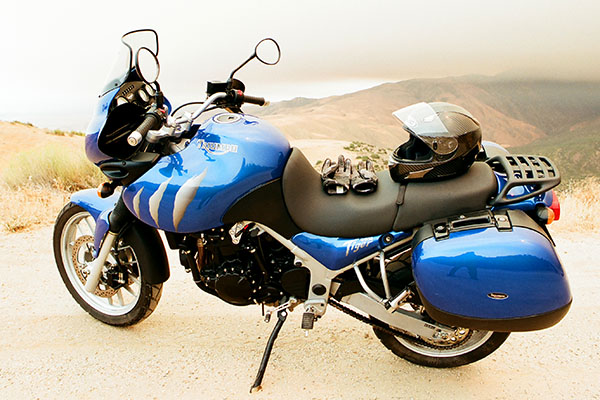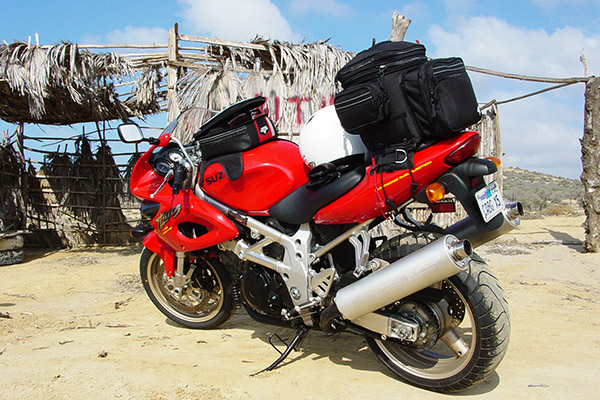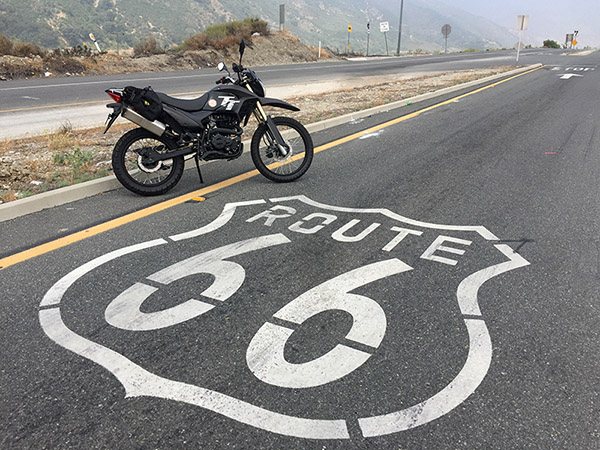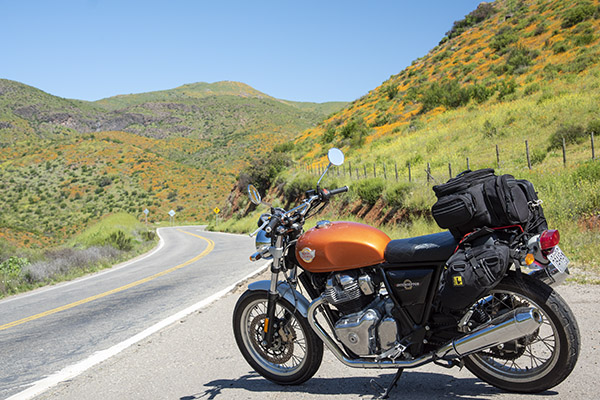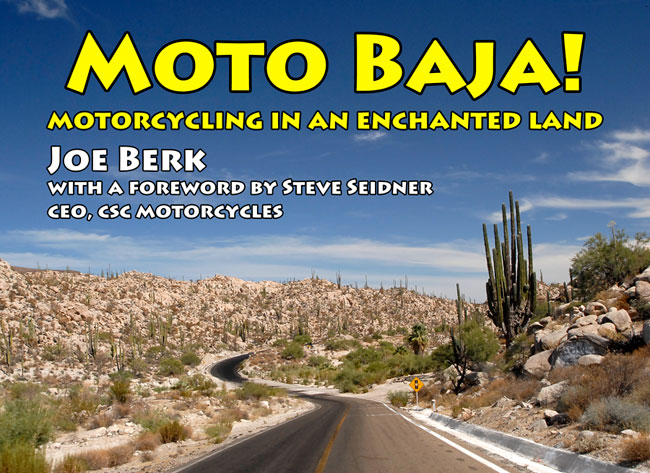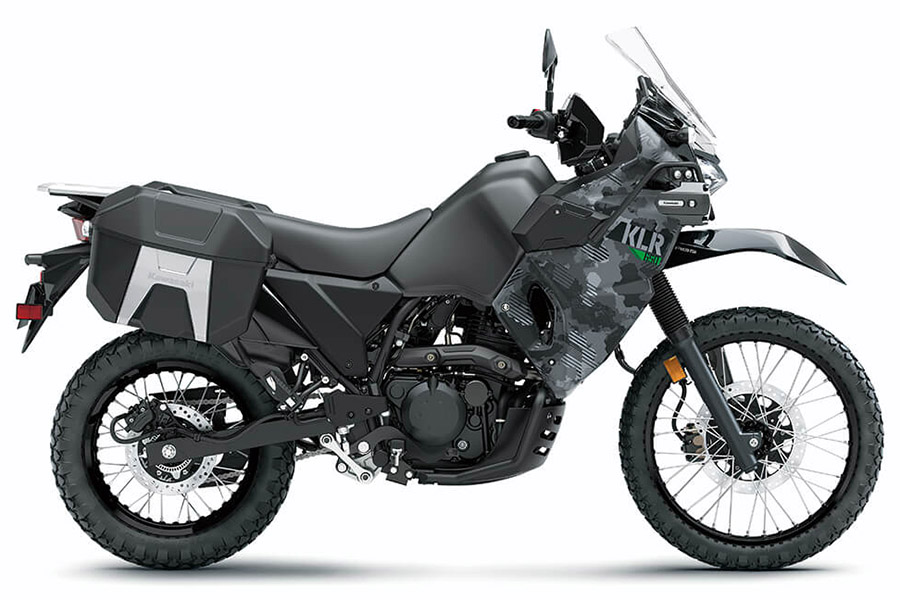This is a blog that is sure to be controversial and elicit a few comments. It attempts to answer a very specific question: Which motorcycles are best for Baja?
As a qualifier, let me mention a few things up front:
-
- Most of my Baja riding is on asphalt, and that necessarily colors my opinions. Yeah, there’s a lot of great dirt riding in Baja, but I am a streetster at heart. Your mileage may vary.
- You don’t need to spend $30K on a Baja blaster. What good is driveway jewelry if you are afraid to get it dirty and if you’re constantly worried about where you parked? In Baja, a big, heavy motorcycle (ADV-styled or otherwise) puts you at a disadvantage. I am not a fan of huge displacement, tall, expensive motorcycles. For real world riding (especially in Baja), monster motorcycles are more of a liability than an asset. Even that new one that’s 20 years late to the party.
- What I think you need in Baja is a comfortable bike with range. There are places where you can go more than a hundred miles between fuel stops, and you need a bike that can go the distance. That means good fuel economy and a good-sized fuel tank.
- Luggage capacity is a good thing, but if your bike doesn’t have bags, you can make do with soft luggage. In fact, I’d argue that soft luggage is better, because it’s usually easier to detach and bring in with you at night.
With that said, here goes:
CSC’s RX3
Say what you want about Chinese bikes, and say what you want about smallbore bikes, I’m convinced my 250cc CSC RX3 was the best bike ever for Baja.
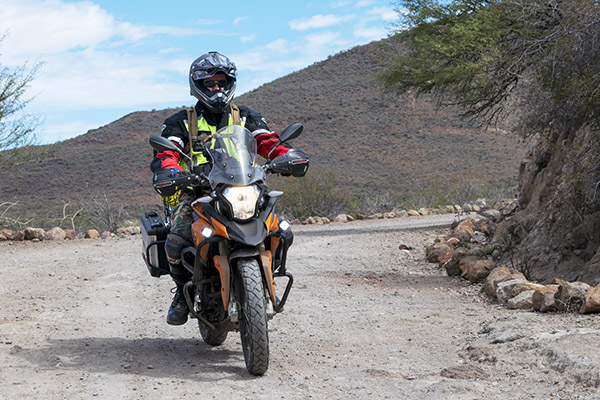
The RX3 tops out at about 80 mph and that’s more than enough for Baja’s Transpeninsular Highway (the road that runs from the US border all the way down to Cabo San Lucas). The bike is comfortable and it gets 70 mpg. The fuel tank holds over 4 gallons. I could carry everything I needed (including a laptop, a big Nikon and a couple of lenses, and clothes) in the bike’s standard panniers and topcase. I also carried tools and spare parts, but I never needed them. It was superbly well suited for Baja exploration, as I and more than a few others know. One more thought…before you pummel me with the inevitable “Ah need at least a thousand cc” comments, take a look at our earlier blog, Why a 250?
Kawasaki’s KLR 650
I owned a 2006 KLR 650 Kawasaki for about 10 years. I bought it new and I loved the thing. I think it is one of the best bikes I’ve ever ridden in Baja. Yeah, it was a little tall, but once in the saddle I had no problem touching the ground.
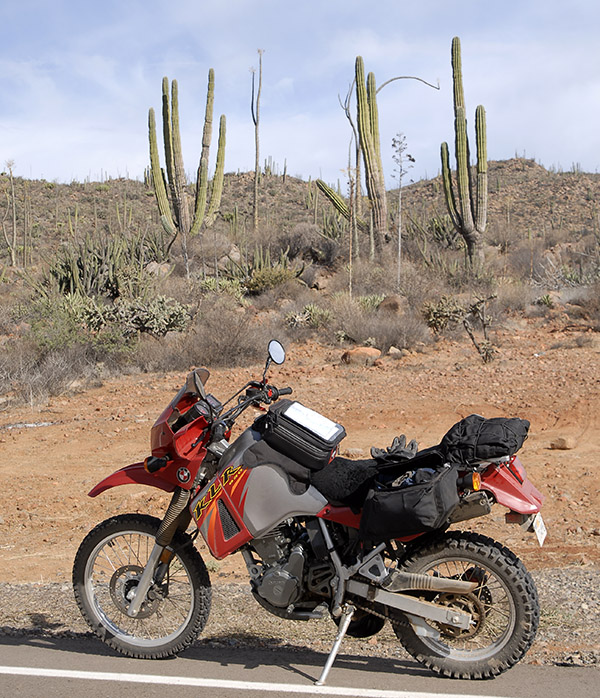
The Kawi didn’t come with luggage, but I bought the cheap Kawasaki soft luggage panniers and a Nelson Rigg tankbag and I was good to go (I didn’t need the obligatory KLR milk crate). Although the KLR was heavy, it did surprisingly well off road (especially running at higher speeds over the rough stuff), and I did more offroad riding with the KLR than I have with any of the other motorcycles I brought into Baja. It averaged 56 mpg, and with its 6-gallon gas tank, I could make the trek between El Rosario and that first Pemex 200 miles further south without stopping for fuel.
CSC’s RX4
I’ve never owned an RX4, but I’ve ridden one a fair amount and I’ve done detailed comparisons between the RX4, the RX3, and the KLR.
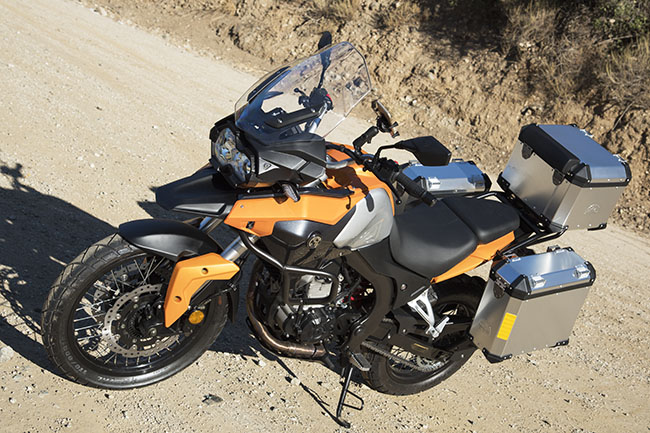
I’ve never taken an RX4 into Baja, but I’ve ridden both (the RX4 and Baja) enough to know that it would do well down there. Think of the RX4 as an RX3 with more top end, more acceleration, and a bit more weight. It’s got the luggage and the ground clearance for extended travels with some offroad thrown in, and it also gets about the same fuel economy as the RX3. Fit and finish on the RX4 is superior (it’s almost too nice to take offroad). The RX4 is a lot of motorcycle for the money. The pandemic hit our shores not too long after the RX4 did, or I would have seen more of the RX4 south of the border.
Genuine’s G400c
I rode Genuine’s new G400c in San Francisco, courtesy of good buddy Barry Gwin’s San Francisco Scooter Center, and I liked it a lot. It’s compact, it has adequate power, it has an instrument layout I like, and it’s a fairly simple motorcycle.
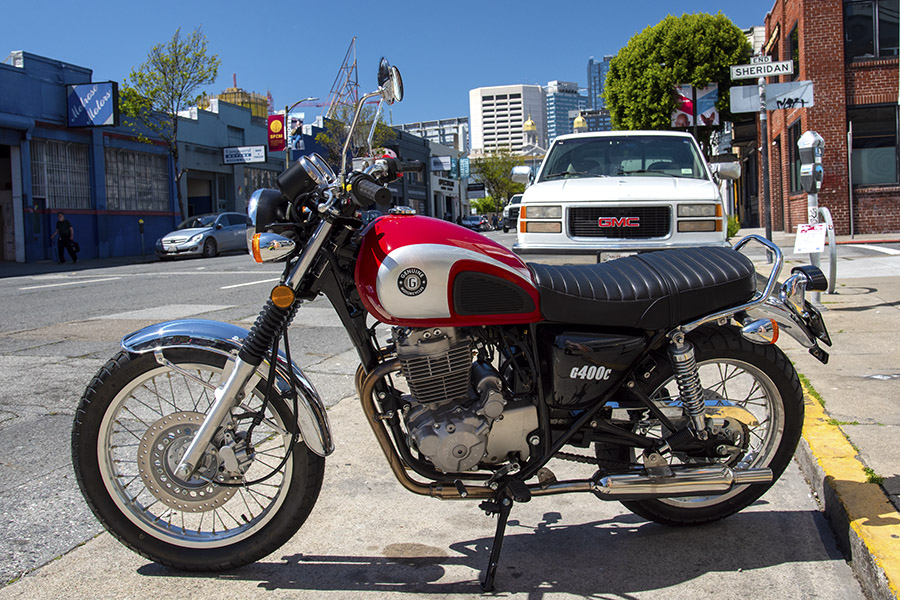
I think with soft luggage, the Genuine G400c would make an ideal Baja blaster, and the price is right: It rings in right around $5K. With its Honda-clone 400cc motor (one also used in the Chinese Shineray line and others), it has enough power to get up to around 90 mph, and that’s plenty for Baja. I rode a different motorcycle with this powerplant in China and I was impressed. I think this would be an ideal bike for exploring Baja.
Royal Enfield’s 650 Interceptor
Yeah, I know, the new Enfield Interceptor is a street bike with no luggage. But with a Nelson Rigg tailpak and Wolf soft luggage, the Interceptor was surprisingly in its element in Baja. Gresh will back me up on this.

We had a whale of a time exploring Baja on a loaner 650 Enfield (thanks to Enfield North America and good buddy Bree), and I liked the bike so much I bought one as soon as I could find a dealer that didn’t bend me over a barrel on freight and setup. There’s one parked in my garage now. The bike is happy loping along at 65-70 mph, it’s comfortable (although I’ll be the first to admit it needs a sheepskin cover on that 2×4 of a seat), and it gets 70 miles per gallon. I wouldn’t take it off road (except maybe for that 10-mile stretch to go see the cave paintings in the Sierra San Francisco mountains), but like I said at the beginning of this conversation starter, I’m mostly a street rider.
Royal Enfield’s 400cc Himalayan
I’ve seen these but not ridden one yet. Good buddy Juan Carlos, a great guy with whom I rode in Colombia, has gone all over South America on Enfield’s new Himalayan and he loves it (that’s his photo below). Juan knows more about motorcycles than I ever will, and if Juan says it’s good, it’s good.
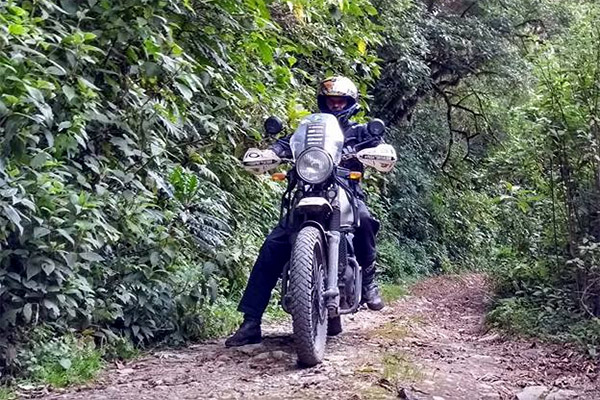
I like the look of the Himalayan and I like its single-cylinder simplicity (come to think of it, with the exception of the Enfield Intercepter, every bike on this list is a single). 400cc, I think, is about the right size for Baja. The price is right, too. Royal Enfield is making fine motorcycles that won’t break the bank. I think the Enfield Himalayan would be a solid choice for poking around the Baja peninsula, one that probably has the best off-road capabilities of any bike in this list.
I’m sure I’m ruffling a few feathers with this piece, and I’m doing that on purpose. I’ve been taking pot-stirring lessons from Gresh (that’s him in the photo at the top of this blog). We’d like to hear your comments if you disagree with any of the above. Do us a favor and leave them here on the ExNotes blog (don’t waste your time posting on Facebook as that stuff will scroll on by and be gone; ExNotes is forever).
All the above notwithstanding, I’ll add one more point: The best Baja motorcycle for each of us is the one we have. You can ride Baja on just about anything. I’ve been to Cabo San Lucas and back on everything from a 150cc California Scooter to a Harley Heritage Softail cruiser. They’re all good. Don’t put off a trip because you don’t think you have the perfect motorcycle for a Baja adventure. Baja is the best riding I’ve ever done.
Please visit our advertisers and click on the ads!
I’ve done a lot of riding on a lot of different motorcycles in Baja. You can read all about that in Moto Baja!
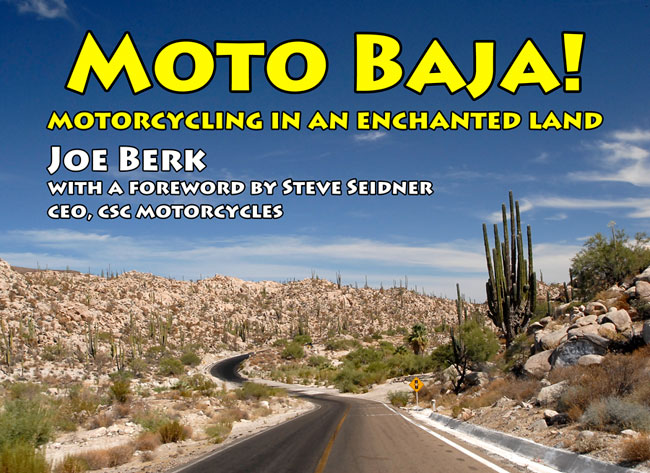
Heading into Baja? Make sure you insure with BajaBound, our choice for the best motorcycle insurance in Mexico!

More info on Baja? It’s right here!
Never miss an ExNotes blog. We cover an eclectic mix of topics, including motorcycles, travel, bicycles, construction, guns, reloading, all kinds of product reviews, and more. Subscribe here for free:




